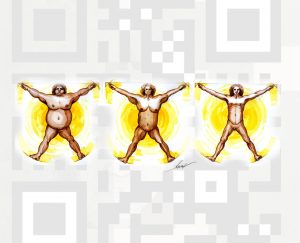View the TERM OF CONSENT

Technical name: Body Contour Surgery (Cervicofacial Lift, Brachial, Crural, Mammoplasty, Classic, Reverse and Circumferential Abdominoplasty, and Liposuction)
Popular Names and Body Parts: Surgery of the Face, Breasts, Arms, Abdomen, Back and Thighs, as any excess skin after weight loss can be treated.
Objectives: To remove the excess skin after the Reducing Gastroplasty with aesthetic intentions and also in order to better hygiene, ambulation and physical activities.
Recommended age: usually between 20 and 60 years.
Planning: We divide the body into 4 areas. Area 1: face and neck. Surgery: Rhytidectomy. Area 2: Mamas, Thorax and Arms. Surgery: Toracobraquio-mamoplasty. Area 3: Abdomen. Surgery: Circumferential or Ankle Abdominoplasty. Area 4: Thighs. Surgery: Lift Crural.
Anesthesia: Local with Sedation in Area 1; General in Area 2; Peri-dural or General in Areas 3 and 4.
Duration of surgery: 3 to 5 hours.
Stay in the clinic: from 24 to 48 hours.
Scar: long. But in hidden places and if there is care in the postoperative, the scars are imperceptible.
Preoperative:
All routine laboratory tests, plus total proteins, albumin, C-reactive protein and serum iron.
Postoperative:
Daily dressings. Using the direct micropore leftovers the lesion, and after bathing, renew the micropore every 7 days. In case of points, withdrawal with 10 days. Use straps or elastic bands for 2 months.
Medications: Antibiotic (Cefadroxil 500mg VO of 12 / 12h box with 8 comp.) Medications taken at the hospital: Antibiotic (Keftaple 1g EV of 12 / 12h), Antinflammatory (Profenid 01 amp 12 / 12h EV), Analgesic (Tramal 01 amp EV if you have pain). Other usual medications for vomiting, stomach, antihypertensive. The dressing is renewed. Medications taken at home (WITH MEDICAL RECIPE): Antibiotic (Cefadroxil 500mg VO of 12 / 12h box with 8 comp.), Antinflammatory (Biprofenid 01 comp. VO every 12 hours), Analgesic (Dipirone or Tylex 30mg VO if pain) And the usual ones.
Recovery time: varies depending on size and location of surgeries. On average 1 to 3 months.
Care after Ex-Obese Surgery:
Apply topical antiseptic (70% alcohol, colorless Merthiolate or Rifocin spray) over the scars, over the Micropore. Renew the micropore every 7 days, and withdraw with 1 month.
Return to work as directed. Around 1 month.
Do not pick up sun for at least 2 months. Photoprotector 30 FPS daily.
In case of a high scar, massage for one minute with Rosehip Cream at 15% + Tamoxifen Citrate 0,1%; Or 0.5% Triamcinolone + 0.5% Hydrocortisone. In case of reddish scar, use Kelo-cote gel 2 times a day.
The scar may turn red for up to 6 months. In this case, do not expose yourself to the sun and avoid crustacean.
Return for revisions of one month, two months and six months. Final return with one year.
Maintain contact with the general practitioner, nutritionist and psychologist of Obeso Nucleus of Ceará.
The ultimate goal of plastic surgery is to enhance the patient’s self-esteem achieved with Gastroplasty, restoring self-image and personal satisfaction.
Ex-Obese Treatment Planning:
Plastic surgery in the Ex-obese is now a new category within the specialty. They are surgeries involving a double care, both in the clinical part (with attention to anemia) and in the surgical part (due to the increased risk of bruising and dehiscence of the sutures). They are made in virtually all regions of the body, due to the amount of skin left over after the large weight loss. On the face: Ritidoplasty (lift), and Blepharoplasty (eyelids); In the body: Mastopexy with breast prosthesis, Abdominoplasty (normal, in Anchor, or Circumferential, when necessary), Flank surgery, Gluteoplasty, Lift of arms and thighs, and Toracoplasty.
When plastic surgeons began to perform these surgeries, there was no standardization or adaptation for these ex-obese patients. Many complications were due to the large detachments, which we now know to be unnecessary. Major changes were made to improve the treatment of these patients.
The first Gastroplasties were opened, with large medial incisions above the navel. Thus, in the treatment of the abdomen, medial incisions were made more frequently. Today, with the video surgeries, the resulting small incisions make us choose another type of abdominoplasty, the circumferential one. However, the abdomen is only one chapter apart from ex-obese patients. We have to see the whole, always evaluating the psychological side of these patients, and plan very well the sequence and association of surgeries to be made.
We chose to divide the body into four parts: 1- face and neck; 2- breast, thorax and arms; Abdomen and back; And 4- thighs and legs. In this way, with four surgeries we can treat all regions, when indicated, or necessary. Their order can be chosen by
Patient is usually the region that most disturbs the first. Part 1 is more affected in patients over 40, with sagging in the middle and lower third of the face, and especially in the neck.
The treatment for these cases is rhytidectomy (or facial lift), with facial fills afterwards. Part 2 is quite extensive, and a larger surgery, the Toracobraquio-mamoplasty, usually with placement of breast prostheses may be necessary. Where the arms, the side of the thorax, and the mammary ptosis are treated (present in almost 100% of the cases).
Part 3 is treated with Abdominoplasty, which often has a posteriorly extended scar, for treatment of the flanks and back (the circumferential Abdominoplasty), the abdomen in Anchor, with a medium scar is left for more extreme cases. In some cases, excess lateral flank tissue may be used as a flap to fill the gluteal region.
Part 4 is usually the last to be done, with removal of sagging of the thighs, with Cruroplasty, or Crural Lift . With a scar that descends through the inguinal region, inner thigh, even the knee. All surgeries performed in these patients aim to increase their self-esteem. Even with many scars, the treatment removes the last stigmas of extreme obesity, by eliminating the great excess of skin.